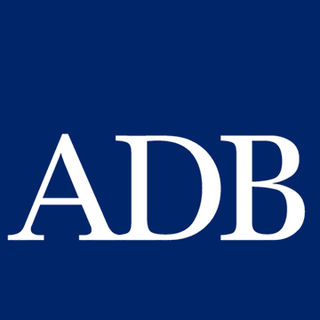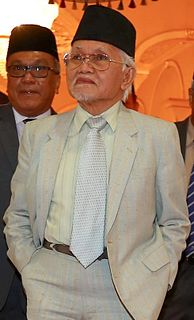
The Asian Development Bank (ADB) is a regional development bank established on 19 December 1966, which is headquartered in the Ortigas Center located in the city of Mandaluyong, Metro Manila, Philippines. The company also maintains 31 field offices around the world to promote social and economic development in Asia. The bank admits the members of the United Nations Economic and Social Commission for Asia and the Pacific and non-regional developed countries. From 31 members at its establishment, ADB now has 68 members, of which 49 are from within Asia and the Pacific and 19 from outside. The ADB was modeled closely on the World Bank, and has a similar weighted voting system where votes are distributed in proportion with members' capital subscriptions. ADB releases an annual report that summarizes its operations, budget and other materials for review by the public. The ADB-Japan Scholarship Program (ADB-JSP) enrolls about 300 students annually in academic institutions located in 10 countries within the Region. Upon completion of their study programs, scholars are expected to contribute to the economic and social development of their home countries. ADB is an official United Nations Observer.

Chile is ranked as a high-income economy by the World Bank, and is considered as South America's most stable and prosperous nation, leading Latin American nations in competitiveness, income per capita, globalization, economic freedom, and low perception of corruption. Although Chile has high economic inequality, as measured by the Gini index, it is close to the regional mean.
In economics, the Gini coefficient, sometimes called Gini index, or Gini ratio, is a measure of statistical dispersion intended to represent the income or wealth distribution of a nation's residents, and is the most commonly used measurement of inequality. It was developed by the Italian statistician and sociologist Corrado Gini and published in his 1912 paper Variability and Mutability.

The economy of Malaysia is the 3rd largest in Southeast Asia, and is the 35th largest economy in the world. Malaysian labour productivity is significantly higher than neighbouring Thailand, Indonesia, Philippines or Vietnam due to a high density of knowledge-based industries and adoption of cutting edge technology for manufacturing and digital economy. According to the Global Competitiveness Report 2018, the Malaysian economy is the 25th most competitive country in the world in the period of 2018–19.
In economics, income distribution is how a nation's total GDP is distributed amongst its population. Income and its distribution have always been a central concern of economic theory and economic policy. Classical economists such as Adam Smith, Thomas Malthus, and David Ricardo were mainly concerned with factor income distribution, that is, the distribution of income between the main factors of production, land, labour and capital. Modern economists have also addressed this issue, but have been more concerned with the distribution of income across individuals and households. Important theoretical and policy concerns include the relationship between income inequality and economic growth.
The New Economic Policy (NEP) was a social re-engineering and affirmative action program formulated by the National Operations Council (NOC) in the aftermath of 13 May Incident in Malaysia. This policy was adopted in 1971 for a period of 20 years and it was succeeded by the National Development Policy (NDP) in 1991. This article looks into the historical context that gave rise to the formulation of this policy, its objectives and implementation methods as well as its impact on the Malaysian economy in general.

Dato' Sri Haji Mohammad Najib bin Tun Haji Abdul Razak is a Malaysian politician who served as the 6th Prime Minister of Malaysia from 2009 to 2018. He was the former President of the United Malays National Organisation (UMNO), the leading party in Malaysia's Barisan Nasional (BN) coalition, which maintained control of Malaysia's government as a parliamentary majority for more than sixty years until the coalition's defeat in the 2018 general election.
Income inequality metrics or income distribution metrics are used by social scientists to measure the distribution of income and economic inequality among the participants in a particular economy, such as that of a specific country or of the world in general. While different theories may try to explain how income inequality comes about, income inequality metrics simply provide a system of measurement used to determine the dispersion of incomes. The concept of inequality is distinct from poverty and fairness.
International inequality refers to the idea of inequality between countries. This can be compared to global inequality which is inequality between people across countries. This may refer to economic differences between countries. As well as, medical care and education differences.

Tun Pehin Sri Haji Abdul Taib bin Mahmud is the Yang di-Pertua Negeri of Sarawak, in office since 2014. Previously he was Chief Minister of Sarawak from 1981 to 2014. Taib was also the President of Parti Pesaka Bumiputera Bersatu (PBB), which is part of the Barisan Nasional coalition. He is of ethnic Melanau descent.
East Coast Economic Region(ECER) is an economic development region based on the east coast of Peninsular Malaysia, which covers the states of Kelantan, Terengganu, and Pahang, and the district of Mersing in northeast Johor. ECER is also one of the three economic corridors launched in Peninsular Malaysia under the leadership of Prime Minister Abdullah Ahmad Badawi, the fifth Prime Minister of Malaysia. The other corridors are Iskandar Malaysia in Johor and the Northern Corridor Economic Region (NCER) that covers the states of Penang, Kedah, Perlis and Northern Perak. The ECER development program spans 12 years, beginning in 2007, and involves Public-Private Participation (PPP).

Social inequality occurs when resources in a given society are distributed unevenly, typically through norms of allocation, that engender specific patterns along lines of socially defined categories of persons. It is the differentiation preference of access of social goods in the society brought about by power, religion, kinship, prestige, race, ethnicity, gender, age, sexual orientation, and class. The social rights include labor market, the source of income, health care, and freedom of speech, education, political representation, and participation. Social inequality linked to economic inequality, usually described on the basis of the unequal distribution of income or wealth, is a frequently studied type of social inequality. Though the disciplines of economics and sociology generally use different theoretical approaches to examine and explain economic inequality, both fields are actively involved in researching this inequality. However, social and natural resources other than purely economic resources are also unevenly distributed in most societies and may contribute to social status. Norms of allocation can also affect the distribution of rights and privileges, social power, access to public goods such as education or the judicial system, adequate housing, transportation, credit and financial services such as banking and other social goods and services.

Poverty in Canada remains prevalent within some segments of society and according to a 2008 report by the Organisation for Economic Co-operation and Development, the rate of poverty in Canada, is among the highest of the OECD member nations, the world's wealthiest industrialized nations. There is no official government definition and therefore, measure, for poverty in Canada. However, Dennis Raphael, author of Poverty in Canada: Implications for Health and Quality of Life reported that the United Nations Development Program, the United Nations Children's Fund (UNICEF), the Organisation for Economic Co-operation and Development and Canadian poverty researchers find that relative poverty is the "most useful measure for ascertaining poverty rates in wealthy developed nations such as Canada." In its report released the Conference Board.

Income Inequality is the extent at which household income is unevenly distributed amongst a population. In other words, it also refers to the gap in income between who can be considered the rich of the population as opposed to the income of those who can be considered the poor of a population.

As of November 2016, India is the second most unequal country in the world after Russia. The richest 1% of Indians own 58.4% of wealth. The richest 10 % of Indians own 80.7 % of the wealth. This trend is going in the upward direction every year, which means the rich are getting richer at a much faster rate than the poor. Inequality worsened since the establishment of income tax in 1922, overtaking the British Raj's record of the share of the top 1% in national income, which was 20.7% in 1939–40.

The poverty line for 2014 marked a per capita income of 100,534 pesos a year. According to the data from the National Statistical Coordination Board, more than one-quarter of the population fell below the poverty line the first semester of 2014, an approximate 78 percent increase since 2013.

Andy Sumner is an inter-disciplinary development economist. He has published extensively on global poverty, inequality and economic development including ten books.

Wealth inequality in Latin America and the Caribbean refers to economic discrepancies among people of the region. Wealth inequality remains a serious issue despite strong economic growth and improved social indicators observed over the past decade. A report release in 2013 by the UN Department of Economic and Social Affairs entitled Inequality Matters. Report of the World Social Situation, observed that: ‘Declines in the wage share have been attributed to the impact of labour-saving technological change and to a general weakening of labour market regulations and institutions. Such declines are likely to affect individuals in the middle and bottom of the income distribution disproportionately, since they rely mostly on labour income.’ In addition, the report noted that ‘highly-unequal land distribution has created social and political tensions and is a source of economic inefficiency, as small landholders frequently lack access to credit and other resources to increase productivity, while big owners may not have had enough incentive to do so.















